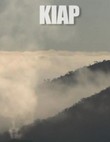| |
Pressure is mounting to locate Montevideo Maru
Prime Minister Kevin Rudd has been asked to commit the Commonwealth Government to an expedition to locate the last resting place of the Montevideo Maru and the men she carried. Of importance, too, is recognising the tragedy by declaring the site of the sinking a Commonwealth War Grave and erecting a monument at an appropriate place on the Philippines coast as a permanent memorial.
The sinking of the Montevideo Maru was Australia’s greatest maritime disaster and those with family involved in the tragedy can empathize with the families of those men lost on HMAS Sydney. It is just as important to locate the Montevideo Maru. The story of the Montevideo Maru should also have a significant place in our Australian history. Australia lost 1,053 men who were said to be on board Montevideo Maru when it was torpedoed by ‘friendly fire’ off the coast of the Philippines on 1 July 1942. Whilst doubts exist over the final passenger manifest, the loss of these men involved twice as many Australians as those who died in Vietnam and over 400 more than HMAS Sydney.
Max Uechtritz, together with the Ninemsn team, put together a comprehensive multimedia coverage which included an indication of potential support from Prime Minister Kevin Rudd. This featured on the Ninemsn news website on 24 April 2008 and links to these articles, as well as several other articles and video links, can still be accessed at: http://news.ninemsn.com.au/article.aspx?id=452388 or http://news.ninemsn.com.au/article.aspx?id=452386 Ninemsn has launched a national petition to the government to fund the search for the Montevideo Maru. The site is http://news.ninemsn.com/article.aspx?id=451908and is well worth a visit as it includes space for personal comments and reflection.
66 years on: recognition for the Montevideo Maru
Maxwell R. Hayes, Una Voce, June 2008, p. 16
At last the fate of the 1,053 unfortunate prisoners of war on this ill fated vessel has stirred the interest of many Australians who have never heard of this vessel and its sinking on 1 July 1942. Previously it was as if the fact that the Australian servicemen and civilians lost in the defence of the hopelessly indefensible obscure locations of New Britain and New Ireland didn’t matter. After the war, in late 1945, details of the sinking of the Montevideo Maru were released but were only of concern to the grieving relatives. To the rest of the Australian population it didn’t matter, after all, it was only one of many Jap ships sunk by American submarines during the war. So what? The battle on the Owen Stanley Ranges was much more important and was closer to home with survivors to return and tell their stories of unparalled hardship, courage and defeat of a much larger Japanese force.
For many years family members and survivors of the ‘Lark Force’; 2/22nd battalion, soldiers and civilians captured in early 1942, have been seeking answers to the absence of information due to the secrecy still surrounding Australia’s greatest maritime loss of life due to an appalling lack of interest and insensitivity on the part of successive Australian governments over the last 63 years since the end of WW2. The reason appears to be simple. The then Curtin Australian wartime government abandoned those unfortunate souls to their fate, when they could have been saved. It decreed that the loading of copra on the Norwegian freighter, the Herstein, was more important than evacuating those hopelessly outnumbered defenders of Rabaul and New Ireland and the male civilians remaining there. Little wonder that any government would want to give access to files testifying to its own betrayal of its citizens.
After years of trying, along with others, to get some publicity for this tragic event, I managed to get a lengthy letter printed in the Melbourne Age and an edited version in the Melbourne Herald Sun on 13 April 2008, though I feel this only came about by linking it, as I did, with the loss of HMAS Sydney. This seemed to cause considerable interest and I had many enquiries. As a result considerable public interest appears to have been created by events which follow below.
At this stage I must state that I am only one of many who have had the fate of those on the Montevideo Maru at heart but in the absence of others not writing an update for Una Voce, I feel compelled to do so.
Despite the publishing of several books on events about the Japanese capture of Rabaul and Kavieng in January 1942 (Rabaul 1942, Aplin 1980; Coconuts and Tearooms, Boys 1993; Hostages to Freedom, Stone 1995/1999; Betrayal in High Places, McKay 1996; Masked Eden, McCosker 1998; A Very Long War, Reeson 2000; Yours Sincerely, Tom, Henderson 2000; Uncle Joe’s Story, Osley 2002; Yours Sincerely, Tom, Revisited, Henderson 2005; He’s Not Coming Home, Nikakis 2005; The Lost Women of Rabaul, Miller 2006, and other publications), none seems to have caused more than the slightest ripple of interest amongst the Australian population.
Considerable credit for also persevering with this quest is due to Albert Speer, MBE, a WW2 soldier in PNG as well as being a long serving PNG Administration officer who by dint of extensive searching, considerable expense and good luck finally located one of the Japanese seamen who managed to get ashore with several other seamen (several of whom were killed by Philippine guerillas). He is believed to be the only remaining survivor alive today. On a trip to Japan in 2002, Albert discovered an obscure publication, Japanese Merchant Ships at War, a history of the OSK Mitsui line (of which the Montevideo Maru was a part) by a Japanese historian, Hishahi Noma, who was able to put Albert in touch with Yoshiaki Yamaji. As a result of this it was deemed of sufficient interest to approach Max Uechtritz, then Director of News and Current Affairs, with PNG connections going back to the very early days of his great grandmother Phoebe Parkinson. Max then directed the ABC Tokyo correspondent to locate and interview Yamaji which resulted in a revealing report on the Montevideo Maru aired as part of the ABC 7.30 Report on 16 October 2003, but again the interest lapsed.
Some interest was shown by families when the Montevideo Maru Memorial was commissioned at Ballarat on 7 February 2004 as a minor part of the huge POW wall commemoration This privately funded memorial (with funding refused by the Federal Government) and the commissioning aroused only slight, but quickly forgotten, interest.
Fast forward to 2008. Some action at last. Local and interstate newspapers are taking some interest. The Melbourne Herald Sun devoted two pages to the story of the 2/22nd battalion (featuring Norm Furness, one of the handful of that ill fated unit) and the fall of Rabaul in the weekend magazine on 19 April 2008.
The Melbourne Age featured a full page article by Simon Mann on 25-26 April 2008 about a letter from his uncle, Eric Mann (captured at Rabaul), and part of a bundle of letters airdropped by the Japs over Port Moresby in early 1942.
An ABC documentary TV crew filmed the Melbourne Shrine service held on 20 January 2008 (being the Sunday before the fall of Rabaul) and this was aired on TV as part of the Compass program on Sunday 20 April 2008. This program very largely revolved around the Brunswick Salvation Army band, which served as medical attendants of the 2/22nd battalion and which was lost with the exception of a single survivor still living in Victoria, Fred Kollmorgen.
Max Uechtritz, now Editor in Chief of Channel 9, put together a very extensive online multimedia presentation on the fall of Rabaul with the focal point being the Montevideo Maru on 24 April 2008. This remained, with links, for several days. These links focused on several aspects of the Rabaul debacle. One of these was a petition calling on the Prime Minister to fund a search for the wreck of the Montevideo Maru off Cape Luzon, Philippines, and for the declaration of this site as a war grave. As at the date of this report for Una Voce, nearly 1000 comments were logged on. Around 99% of those were in favour of the twin proposals. Many comments show that Australians are appalled that they have never heard anything about this disaster. Did these men give their lives for Australia’s freedom just to be forgotten? They deserve some formal recognition.
Our Editor, Andrea Williams, the granddaughter of Philip Coote, a victim of the sinking, made a live appearance on the Channel 9 Today Show on Anzac Day, and very creditably outlined the facts of the sinking.
The Sydney Morning Herald on Anzac Day ran an article entitled ‘Ship carried 1051 [sic] Australians to their grave’, and The Australian on 26 April 2008 picked up the sinking with a background article entitled ‘Rudd may fund hunt for Montevideo Maru’. The May issue of the Victorian Senior newspaper also gave a detailed report on this sinking and here the journalist had a personal loss: that of his uncle, Sgt Stanley Padey. Many local, intrastate and interstate radio stations also gave coverage of this event.
So, will there finally be a search for the Montevideo Maru? Currently it is believed that Mr Rudd is considering an appeal to provide funds for a search for the location, but not to retrieve, the Montevideo Maru.
That is where progress lies at this moment. We must keep up the impetus and I urge members of PNGAA (Inc) to use every means at their disposal to have this event, in which nearly twice as many Australians died as were lost on HMAS Sydney, enshrined as part of our war time history, the search to locate be made and the site declared a war grave.
|


